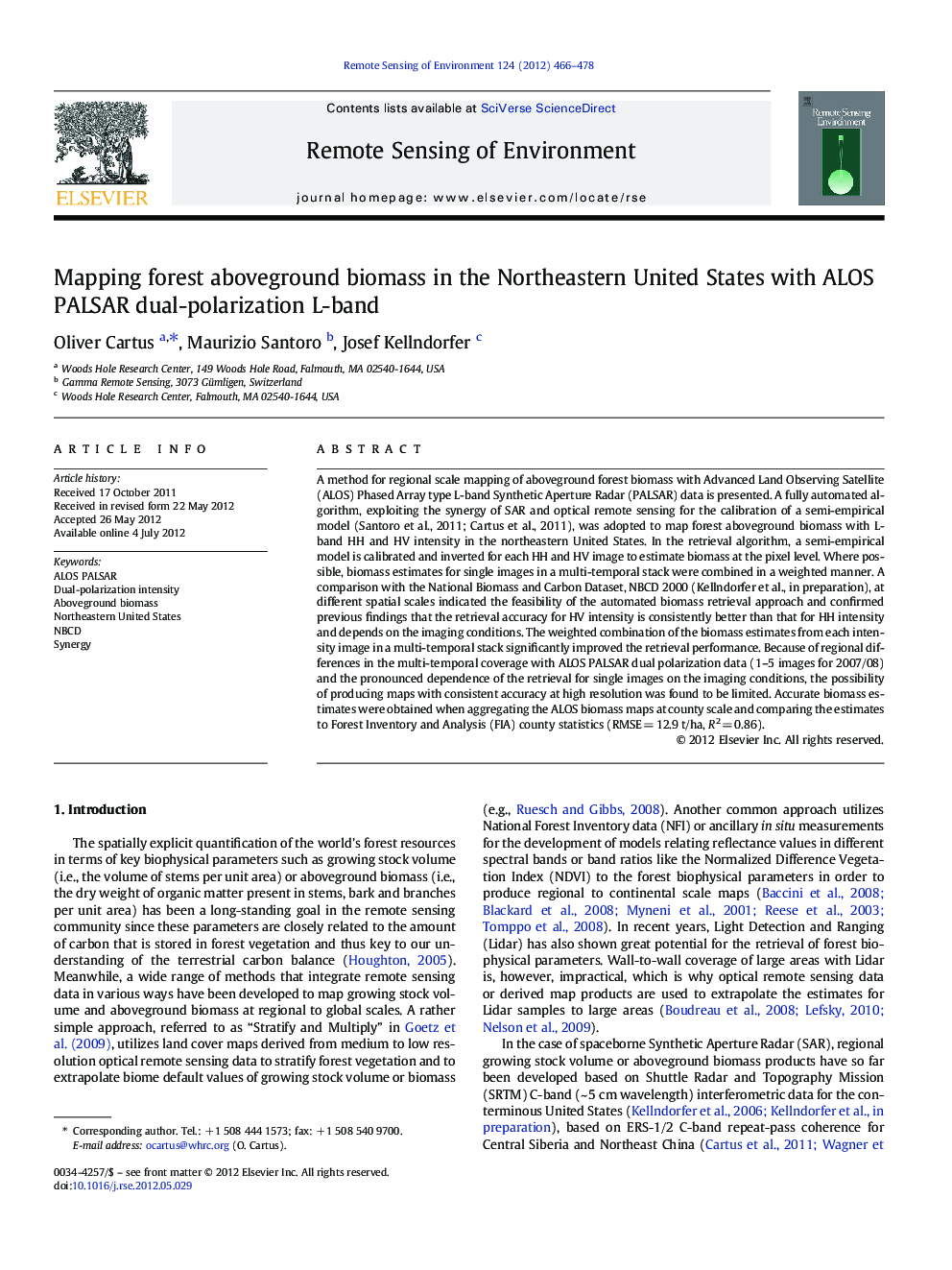| Article ID | Journal | Published Year | Pages | File Type |
|---|---|---|---|---|
| 4459022 | Remote Sensing of Environment | 2012 | 13 Pages |
A method for regional scale mapping of aboveground forest biomass with Advanced Land Observing Satellite (ALOS) Phased Array type L-band Synthetic Aperture Radar (PALSAR) data is presented. A fully automated algorithm, exploiting the synergy of SAR and optical remote sensing for the calibration of a semi-empirical model (Santoro et al., 2011; Cartus et al., 2011), was adopted to map forest aboveground biomass with L-band HH and HV intensity in the northeastern United States. In the retrieval algorithm, a semi-empirical model is calibrated and inverted for each HH and HV image to estimate biomass at the pixel level. Where possible, biomass estimates for single images in a multi-temporal stack were combined in a weighted manner. A comparison with the National Biomass and Carbon Dataset, NBCD 2000 (Kellndorfer et al., in preparation), at different spatial scales indicated the feasibility of the automated biomass retrieval approach and confirmed previous findings that the retrieval accuracy for HV intensity is consistently better than that for HH intensity and depends on the imaging conditions. The weighted combination of the biomass estimates from each intensity image in a multi-temporal stack significantly improved the retrieval performance. Because of regional differences in the multi-temporal coverage with ALOS PALSAR dual polarization data (1–5 images for 2007/08) and the pronounced dependence of the retrieval for single images on the imaging conditions, the possibility of producing maps with consistent accuracy at high resolution was found to be limited. Accurate biomass estimates were obtained when aggregating the ALOS biomass maps at county scale and comparing the estimates to Forest Inventory and Analysis (FIA) county statistics (RMSE = 12.9 t/ha, R2 = 0.86).
► A semi-empirical approach is used to map biomass with ALOS PALSAR FBD data. ► Landsat products are used for training of models relating L-band intensity to biomass. ► Multitemporal combination of single image estimates leads to significant improvements. ► Accurate estimates of biomass for Northeastern US were obtained at county scale. ► Variable multitemporal coverage and imaging conditions affected retrieval performance.
